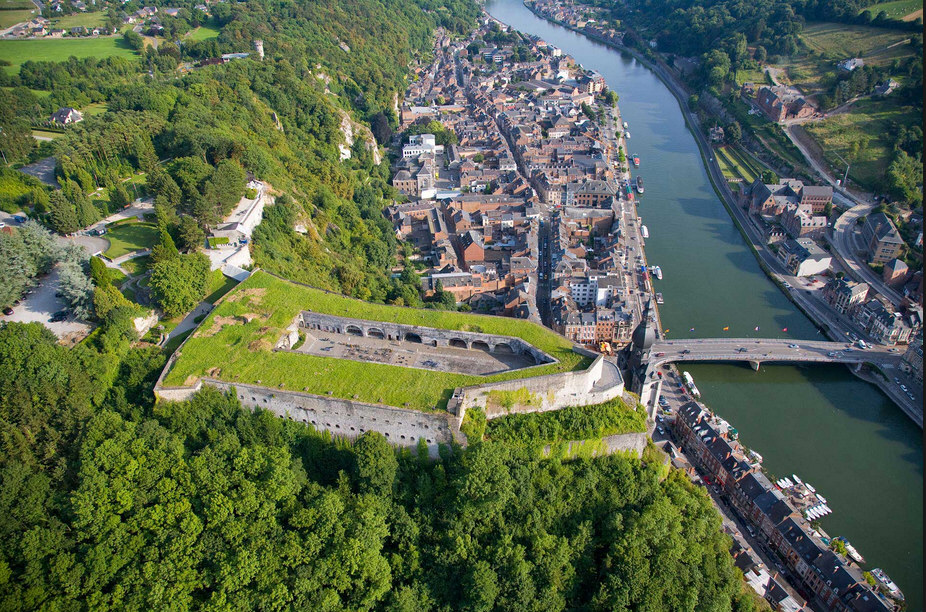
Click on Image to Expand

Dinant, Belgium, on the River Meuse is where French and German forces first fought each other on Belgium soil in the Great War. The town is dominated by a huge citadel built by the Holy Roman Empire. In August 1914 French scouts approaching from the south entered Dinant and discovered to their surprise that the fortress over the town had been abandoned by the Belgian Army. Meanwhile the German Army was sweeping down from the northeast.
On 15 August, the same day that Fort Loncin was destroyed at Liège, a contingent of French soldiers was sent to the citadel to prepare to defend the citadel and the valley below, down which they expected the enemy to be advancing. To their surprise, a battalion of German troops approached along the cliffs and entered the citadel from the rear. The French soldiers retreated and, unfortunately for them, ended up in a dead end gallery. All 80 men of the French contingent were killed along with 12 Germans. A monument marks where those first soldiers were cremated.

On 15 August, the same day that Fort Loncin was destroyed at Liège, a contingent of French soldiers was sent to the citadel to prepare to defend the citadel and the valley below, down which they expected the enemy to be advancing. To their surprise, a battalion of German troops approached along the cliffs and entered the citadel from the rear. The French soldiers retreated and, unfortunately for them, ended up in a dead end gallery. All 80 men of the French contingent were killed along with 12 Germans. A monument marks where those first soldiers were cremated.
Click on Image to Expand

Aerial View of the Town and Citadel
After an artillery duel followed, and the 8th Regiment of Infantry was ordered to take the town and citadel. Included in these forces was Lt. Charles de Gaulle, who was shot in the leg crossing the bridge across the Meuse. The attack succeeded, and the French regained control of the town and citadel. This was merely temporary, however, since the French Army was soon to engage in a broad retreat out of Belgium and northern France.
Dinant became part of the heritage of German atrocities later in the month when 674 civilians were killed in the fighting or executed for resisting or firing on the German forces.
Dinant became part of the heritage of German atrocities later in the month when 674 civilians were killed in the fighting or executed for resisting or firing on the German forces.
Click on Image to Expand


Rommel crossed the Meuse just south of Dinant on a weir (sort of dam) in 1940 with his 7th Panzer Division. He did not spend any time in Dinant.
ReplyDeleteT. Morgan
Nice to see you're still keeping us updated, Tom!
DeleteAll the best, Stace
A curious question: was the weir in the Meuse already there or did Rommel's engineers build it?
ReplyDeleteAnother Charles De Gaulle monument that I was unaware of.
ReplyDelete